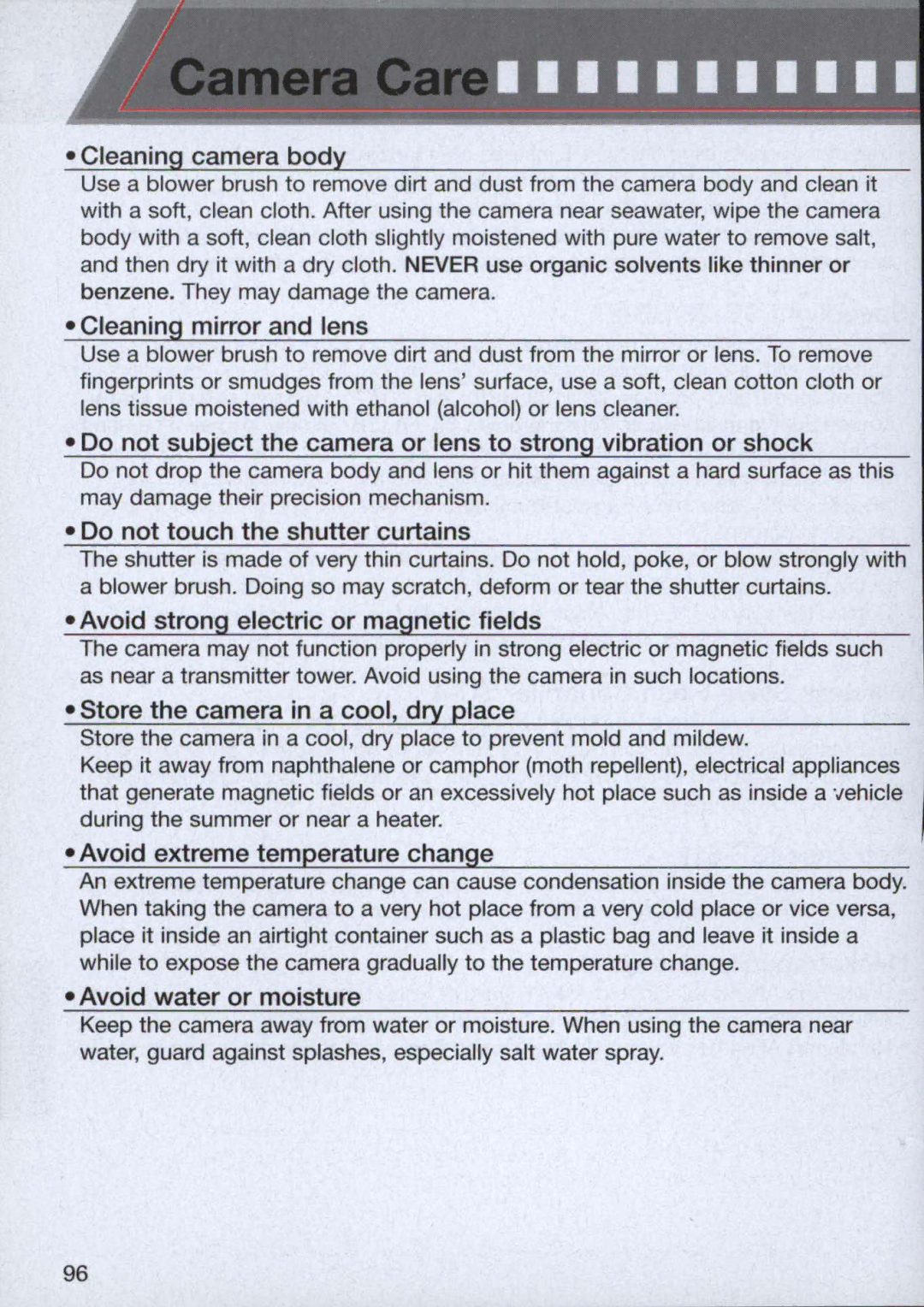
I•••••••••••
•Cleaning camera body
Use a blower brush to remove dirt and dust from the camera body and clean it with a soft, clean cloth. After using the camera near seawater, wipe the camera body with a soft, clean cloth slightly moistened with pure water to remove salt, and then dry it with a dry cloth. NEVER use organic solvents like thinner or benzene. They may damage the camera.
•Cleaning mirror and lens
Use a blower brush to remove dirt and dust from the mirror or lens. To remove fingerprints or smudges from the lens'surface, use a soft, clean cotton cloth or lens tissue moistened with ethanol (alcohol) or lens cleaner.
•Do not subject the camera or lens to strong vibration or shock
Do not drop the camera body and lens or hit them against a hard surface as this may damage their precision mechanism.
•Do not touch the shutter curtains
The shutter is made of very thin curtains. Do not hold, poke, or blow strongly with a blower brush . Doing so may scratch, deform or tear the shutter curtains.
•Avoid strong electric or magnetic fields
The camera may not function properly in strong electric or magnetic fields such as near a transmitter tower. Avoid using the camera in such locations.
•Store the camera in a cool, dry place
Store the camera in a cool , dry place to prevent mold and mildew.
Keep it away from naphthalene or camphor (moth repellent), electrical appliances that generate magnetic fields or an excessively hot place such as inside a 'Jehicle during the summer or near a heater.
•Avoid extreme temperature change
An extreme temperature change can cause condensation inside the camera body. When taking the camera to a very hot place from a very cold place or vice versa, place it inside an airtight container such as a plastic bag and leave it inside a while to expose the camera gradually to the temperature change.
•Avoid water or moisture
Keep the camera away from water or moisture. When using the camera near water, guard against splashes, especially salt water spray.
96
